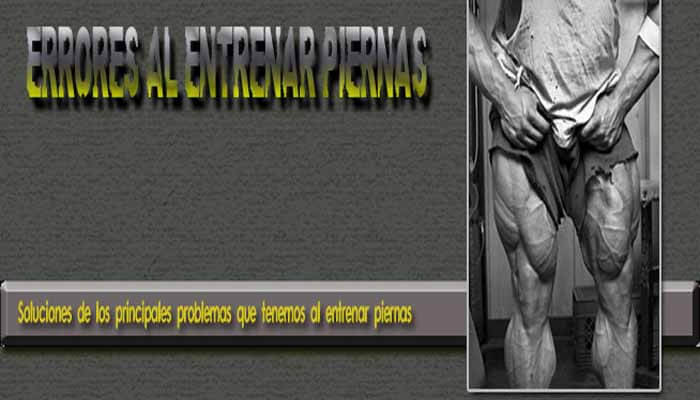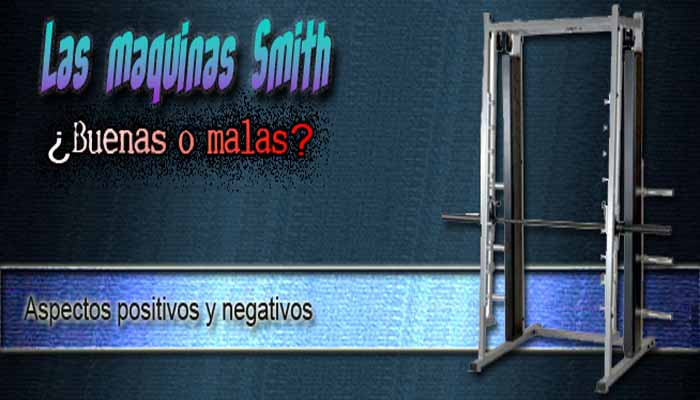Mistakes we make when training legs
If there is a muscle group that does not require creativity with the selection of exercises, these are your legs. A massive quadriceps is rarely achieved through ingenuity. Rather, they are achieved by moving heavy weights in the squat or press through full ranges of motion and high repetitions.
In this article we will show the most common mistakes that happen when training legs.
1 Targeting wrong areas and other muscles.
This is a common mistake: To focus more on your quads and less on your glutes during the Smith machine or hack squats, move your feet further forward. Many believe that a wide stance will train the outer quadriceps better and a narrow stance will hit the inner surface more – another mistake. The fact is, even the most seasoned bodybuilders simply don’t know how to best target the four muscles of the quadriceps (vastus lateralis, rectus femoris, vastus medialis, and vastus medialis) and the muscles of the upper, inner thighs.

Solutions
- Point your right toes to work your outer quadriceps (vastus lateralis); point them out to work the inner quadriceps (vastus medialis).
- Keep your feet under your hips during exercises, such as the Smith machine, to target your quads more and your glutes less.
- Taking a narrow stance will focus more on the outer quadriceps, taking a wide stance (and toes pointing out) will focus more on the inner thigh muscles.
2 Incomplete_Movement Range
You see it in every gym. Most guys load the leg press with as much weight as possible, just bending the knees just enough to keep the weight moving. This same error occurs on squats, smith machines, hack squats, and many times even for leg extensions. Anytime a bodybuilder trains quadriceps, they most likely won’t be working all full range of motion exercises, especially since doing leg exercises for full rep sets is tough and doing medium reps allows heavy training to give. an illusion of stronger training. By limiting the duration of the movements, you are limiting their growth.
Solutions
- Each rep of most squat sets should descend to where your quads are parallel to the floor or platform, if not deeper. The exception to this rule is when you want to do mid squats to focus more on the medial, research shows this is effective.
- In a 45 degree leg press, the knees should touch your chest without the glutes coming out of the leg press seat, which would put a great deal of stress on your lower back.
- When performing leg extensions, try to do a full stretch (perpendicular to the calf of the thigh) with a full contraction, in which you briefly lock your knees and flex your thighs.
- Any other leg exercise should have a full stretch and squeeze.
3 Squats with an incorrect_form
Stopping well below parallel is not the worst offense in squats. Many bodybuilders lean too far forward and push their hips back too far, working their back, hips, and glutes more than their quads. What’s worse, this could strain the spinal erectors. If you are going to squat with a bad position, it is better not to do them. A better option is to practice the correct form of this exercise with the weightless bar until you are an expert.
Solutions
- Generally, when taking a stance that goes beyond shoulder width, it is best to do so with your toes angled slightly outward, but find the position that allows you to stay as close as possible vertical possible. Taller bodybuilders anabolika kaufen online shop often need a wider stance.
- Exaggerate the arch in your lower back.
- Your heels should never come off the floor when squatting. Push the weight up through the heels, not the balls of the feet.
- Look forward through each repetition (not up, not down)
- As you go down, keep your butt on your heels, as if you were going to sit in a chair.
- Consider starting the squat with the Smith machine until you’ve mastered the form, then move on to squats with free weights.
4 Training too heavy
This mistake almost always travels in concert with the one that precedes it, since working too heavy leads to trick reps… and trick reps allow you to pass these types of weights. This is especially true of leg presses, because you will likely be able to use more metal with this exercise than any other. What this does is feed your ego.
Solutions
- Do all exercises with a full range of motion (see mistake # 2).
- Keep reps for most sets in the 8-12 range.
- Focus on the muscles, not the weight.
- Forget about the ego if you want to make progress.




